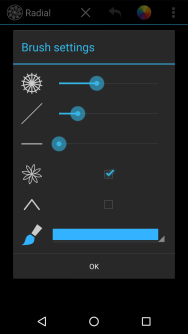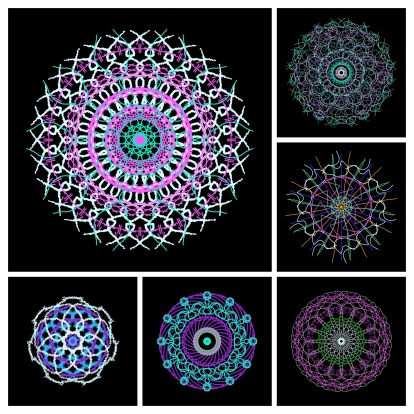Day 19: Blendoku
Sometimes extensive traveling makes you look for things to help you pass the time. That was the case for me this weekend as I sat on a train, exhausted from a long week, needing something to occupy my mind so I didn’t fall asleep and snore. I stumbled upon a fun addictive game that is new to me but has been around for a while, Blendoku by Lonely Few.
Blendoku deals with patterns and sequencing much like a Sudoku game but instead of numbers, you are working with basic color theory and how different colors blend. I love the art and color theory aspect of this game.
In Blendoku you are given a grid where one or more squares are filled with color. You need to use your color pallet to fill out the rest of your grid. The new colors must be in the right order to show how the colors would blend. Seems simple enough and the easy levels are fairly easy to complete. However, I will admit that a couple of them had me stumped for a while. The hard levels are really hard. Not only are there more squares to fill but there are more colors and slight changes in the tone and hue. The addictive nature of the game helped me pass the time on the train. Haven’t beat the game yet but if I ever do, Blendoku 2 is already on my phone waiting. (For a more intense challenge, try Lonely Few’s timed color challenge called Chroma Rush. Next on my download list.)
Blendoku is a free app that works on both iOS and Android. You can play it on your phone, however, the hardest levels are recommended for tablets because the grid gets really small.


Watch the Blendoku 2 trailer from Lonely Few to get an idea of the gameplay.
So, what does a simple little game like Blendoku have to do with educational technology and why would I choose to highlight it on this blog. Simple – puzzle games are a great way to build students’ problem-solving skills. Puzzle-based learning is a popular way to increase students mathematical and computational thinking skills as well as creative and critical thinking needed for a wide variety of careers including Math, engineering, and computer science. (Check out this website to learn more about Puzzle-based Learning.)
If you are more excited about colors than numbers but still want to challenge your mind with an addictive pattern and sequencing puzzle like Sudoku, then Blendoku and Blendoku 2 are worth the download. A couple great free games for students to play and build those problem-solving skills.
Now please excuse me as I try to level up.




